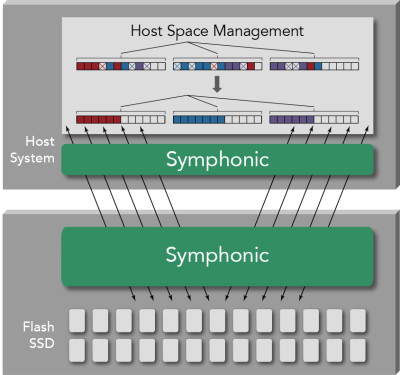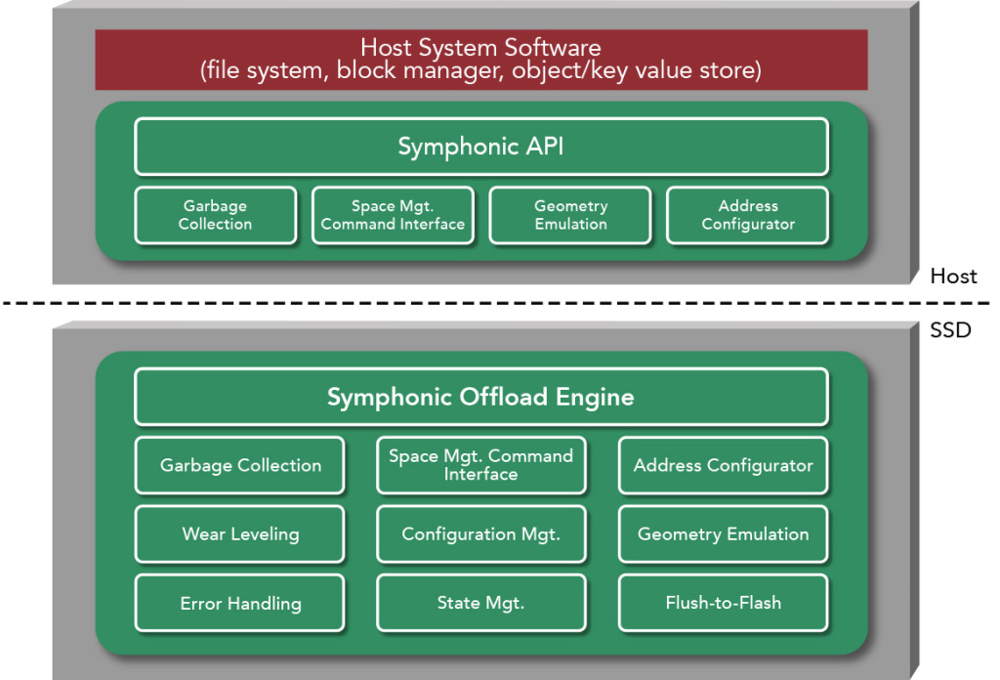SMR Meets Flash With Symphonic Cooperative Flash Management
Radian Memory Systems said
This is a Press Release edited by StorageNewsletter.com on October 9, 2015 at 2:39 pmOn Wednesday, September 23, at the SNIA Storage Developer Conference in Santa Clara, CA., Radian Memory Systems, Inc. provided a presentation on Integrating Cooperative Flash Management with SMR Technology for Optimized Tiering in Hybrid Systems.
Click to enlarge
The latest high density HDDs are based on Shingled Magnetic Recording (SMR) technology that increases HDD densities while reducing costs. SMR has several similarities to NAND flash, both in the asymmetry of the media and the requirement to relocate valid data.
But the similarities between flash and SMR extend beyond the physical medias and into how these medias should be managed at the system level. Host file system modifications required to optimally manage SMR are in large part the same modifications required to optimally manage NAND flash.
Widely utilized general purpose file systems, from ext4 and xfs to zfs, each have popular open source projects underway to support host aware and host managed SMR technology, with most of these efforts centered around the emerging ZBC standard.
While ZBC does not address all of the requirements necessary for a host file system to eliminate Flash Translation Layers (FTLs) and manage flash media directly, Symphonic Cooperative Flash Management (CFM) provides that key missing functionality.
Click to enlarge
File systems including support for SMR can optimally manage flash through the use of company’s Symphonic CFM, achieving flash performance, QoS, and cost advantages not possible with FTL SSDs.
Utilizing SMR and CFM technologies together in hybrid systems creates a design space for potential efficiencies in data migration between SMR HDD and flash storage tiers. These efficiencies can improve the probability of flash read hits while reducing the overhead of transferring data between tiers. Other improvements can involve faster write transfer rates, requiring less flash capacity and reducing flash wear out.















 Subscribe to our free daily newsletter
Subscribe to our free daily newsletter
